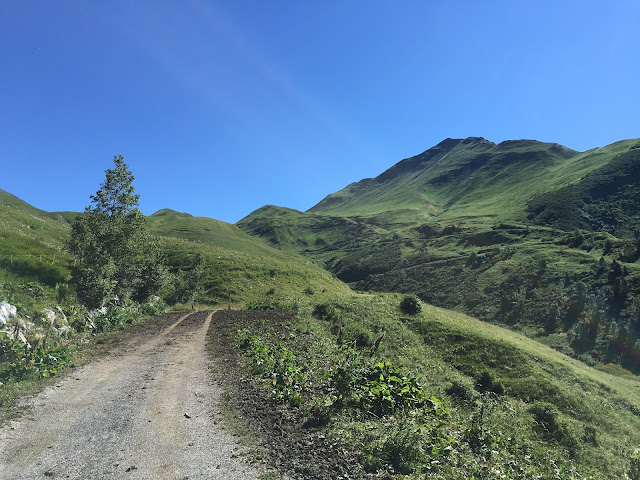The title of this article has been shamelessly pinched from the Roads to Ride section of the Inner Ring blog.
I recently had the opportunity to climb Alpe d’Huez and it left me feeling underwhelmed. Don’t get me wrong, if this climb was in the Lammermuirs you wouldn’t be able to tear me away from it. In the heart of the Alps though the bar is a lot higher.
It may have a lot of racing history but even it’s history is flawed to my eye. It represents the ugly side of the Tour. The wrong sort of spectacle where the focus is the spectators rather than the racing. When the Tour visits it feels like the racing is suffocated by the over-exuberance of those standing in the road.
Climbing the Alpe reveals a major flaw that means it can never be a great. There is no clear finish. Great climbs have a denouement. That moment when there is no question that you’ve reached the summit. The view is suddenly dramatically different, the road starts to plunge downward, there is nowhere left to go. That moment never arrives on Alpe d’Huez. You reach the start of the village. The tourist finish is marked but you know that the Tour stages finish higher up, but where? Somewhere near the ski lifts isn’t it? But once you get there you can’t see a sign and there is a tarmac road which continues on to Lac Besson.
Luckily only a few kilometres away there is a climb that meets this criteria in the most blunt way. The Col du Sabot used to be the main route from the Romanche valley to neighbouring Savoie. When motor vehicles started to take over it was too steep for the new technology and a new route took precedence, the road to the Col du Glandon and the Col de la Croix de Fer. The Col du Sabot has been left as a dead end which stops abruptly at 2100m.
It’s higher, harder, steeper and a lot wilder than the Alpe. The first half climbs a well surfaced road through several villages to Vaujany. It’s a steady gradient which is never too hard with regular hairpins to break up the climbing. A kilometre after Vaujany the nature of the climb changes as the road narrows dramatically and the gradient becomes steeper. The previously fast rolling surface becomes broken and lumpy and like most minor roads in Scotland momentum is hard won.
As you climb higher it feels more remote, this road doesn’t go anywhere. On the day I climbed it I was passed by one car above Vaujany and I only saw a handful of other cyclists who were climbing as I descended. The road simply stops at the top. This is the col.
I enjoyed every part of climbing the Col du Sabot. It’s harder, quieter and better than it’s brash young sibling. The Alpe symbolises carbon wheels, aero bikes and overpriced jerseys with a stripe on the sleeve. This climb reminds you of a simpler way; just you and the road and that’s what makes it great.
So much for the climbing, what about the descent? It’s rubbish! Everything that makes the ascent special; the narrow bumpy road, the gravel, the mud on the corners, the cows standing in the road conspires against you on the way down. I’ve never taken so many photos on a descent, mostly because I was going so slowly that I had plenty of time to take in the amazing view. Once you get below Vaujany and the road improves it becomes a lot more fun.






